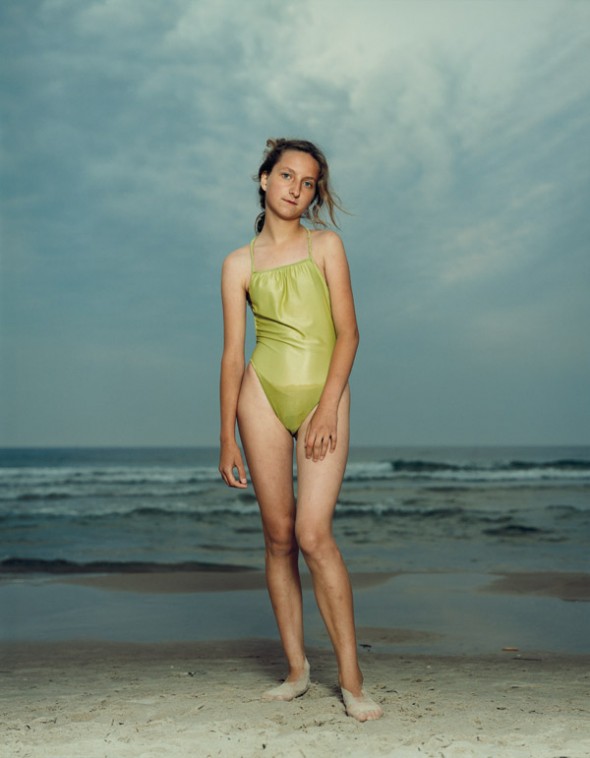Rineke Dijkstra
 A nice retrospective of this Dutch artist’s portraits at the Guggenheim in NYC until October 8. Since the early 1990s, Rineke Dijkstra has produced a complex body of photographic and video work, offering a contemporary take on the genre of portraiture. Her large-scale color photographs of young, typically adolescent subjects recall 17th-century Dutch painting in their scale and visual acuity. The minimal contextual details present in her photographs and videos encourage us to focus on the exchange between photographer and subject and the relationship between viewer and viewed. Rineke Dijkstra: A Retrospective brings together more than 70 photographs and five videos in a major mid-career survey, offering the most comprehensive presentation of the artist’s work to date.
A nice retrospective of this Dutch artist’s portraits at the Guggenheim in NYC until October 8. Since the early 1990s, Rineke Dijkstra has produced a complex body of photographic and video work, offering a contemporary take on the genre of portraiture. Her large-scale color photographs of young, typically adolescent subjects recall 17th-century Dutch painting in their scale and visual acuity. The minimal contextual details present in her photographs and videos encourage us to focus on the exchange between photographer and subject and the relationship between viewer and viewed. Rineke Dijkstra: A Retrospective brings together more than 70 photographs and five videos in a major mid-career survey, offering the most comprehensive presentation of the artist’s work to date.
Dijkstra works in series, creating groups of photographs and videos around a specific typology or theme. In 1992, she started making portraits of adolescents posed on beaches from Hilton Head, South Carolina, to Poland and Ukraine. Shot from a low perspective, the subjects of the Beach Portraits (1992–2002), poised on the brink of adulthood, take on a monumental presence. In contemporaneous works, including portraits of new mothers after giving birth, and photographs of bullfighters immediately after leaving the ring, Dijkstra sought subjects whose physical exhaustion diminished the likelihood of an artificed pose.
Dijkstra has also photographed individuals repeatedly over the course of several months or years. Her ongoing Almerisa series began in 1994 with a single photograph of a young Bosnian girl at a Dutch refugee center for asylum-seekers, and has grown as Dijkstra continued to photograph her regularly for more than a decade, as she became a young woman with a child of her own. The outward signals of her transition into adulthood and her integration into mainstream Dutch culture reveal themselves incrementally over the course of many years. Similarly, the Olivier series (2000–03) follows a young man from his enlistment with the French Foreign Legion through the years of his service, showing his development, both physically and psychologically, into a soldier. Later, Dijkstra took portraits of new initiates to the Israeli army, photographing female soldiers in their uniforms after induction and then again in their civilian dress, as well as male soldiers directly after military exercises.
More recently, Dijkstra has built upon her revelatory work in video from the mid-1990s. In The Buzz Club, Liverpool, UK/ Mystery World, Zaandam, NL (1996–97), and The Krazyhouse (Megan, Simon, Nicky, Philip, Dee), Liverpool, UK (2009), Dijkstra filmed teenage habitués of local clubs dancing to their favorite music. Presented as multi-channel video installations, these works showcase their subjects’ teen personas and methods of self-expression, revealed in how they style themselves, and in the movements of their bodies. Two video works made in 2009 at Tate Liverpool expand the artist’s interest in the empathetic exchange between photographer and subject to include the affective response to artworks. In I See A Woman Crying (Weeping Woman) (2009), a group of school children engage with art, discussing their perceptions and reactions to a work by Pablo Picasso, while Ruth Drawing Picasso (2009) shows a girl pensively sketching a masterwork.
—Jennifer Blessing, Senior Curator, Photography




